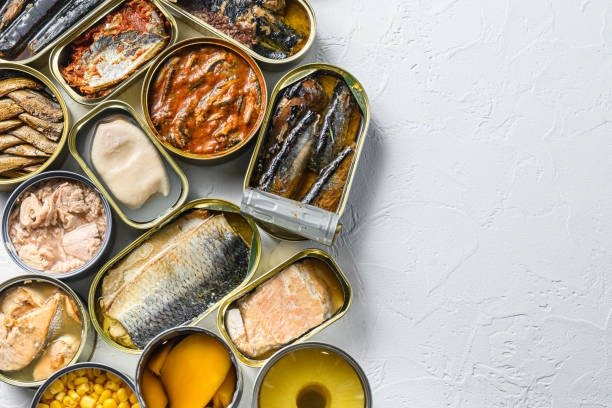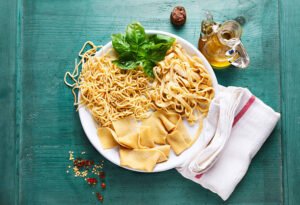
Anchovies are a staple in many kitchens around the arena, prized for his or her rich umami flavor that adds intensity to a variety of dishes. But have you ever ever wondered how anchovies are generally preserved to maintain their taste and texture? In this manual, we will discover the charming global of anchovy renovation, delving into diverse techniques used to preserve these tiny fish flavorful and prepared for culinary use.
History of Anchovy Preservation
The maintenance of anchovies dates back centuries, with early techniques largely targeted at salting and drying. How anchovies are typically preserved has developed drastically over time, from smooth air drying to more state-of-the-art methods like canning and fermentation. Initially, renovation became a necessity to ensure stable meals were delivered at some point during prolonged voyages and cruel winters. As societies advanced, so did the techniques, incorporating modern generations to enhance performance and hold great. The evolution of anchovy maintenance reflects humanity’s ingenuity in extending the usability of meals and improving its flavors.
Why Preserve Anchovies?
Preserving anchovies gives numerous benefits. Firstly, it extends their shelf existence, making them available year-round no matter the fishing season. How anchovies are generally preserved without delay influences their flavor and culinary versatility. Preserved anchovies increase a unique flavor profile that clean ones can’t be healthy, deepening their umami richness.
This transformation is why preserved anchovies are a fave element in a whole lot of dishes, from Caesar salads to pasta sauces. Moreover, preservation techniques like salt curing and oil packing no longer preserve the fish’s edibility but additionally beautify its texture and taste, making them an extra versatile element within the kitchen.
Salt Curing
What is Salt Curing?
Salt curing is one of the oldest techniques for retaining anchovies. This manner entails packing the fish in salt, which draws out moisture and inhibits the growth of microorganisms. How anchovies are typically preserved through salt curing effects in a product with a deeply savory taste and corporation texture, best for culinary use.
Traditional Salt Curing Process
Traditionally, anchovies are layered in barrels with coarse sea salt. The fish are left to cure for numerous months, throughout which they undergo fermentation, developing a deep, savory taste. This conventional technique of how anchovies are commonly preserved has been passed down through generations, preserving its relevance because of the unique taste it imparts to the fish.
Modern Salt Curing Techniques
Today, salt curing can also be carried out with the usage of vacuum-sealed baggage, which streamlines the process and reduces the threat of contamination. Despite the improvements, the core principle stays the equal: using salt to maintain and decorate the flavor of the anchovies. Modern strategies in how anchovies are commonly preserved have made the process more green even as retaining the distinct characteristics that salt curing imparts.
Oil Packing
Introduction to Oil Packing
Oil packing is another popular approach for preserving anchovies. This technique involves packing the fish in oil, which creates a barrier between the air and micro organism. Understanding how anchovies are typically preserved through oil packing is well-known for its significance in keeping the fish’s sensitive taste and texture.
Steps to Oil Pack Anchovies
- Clean and fillet the anchovies.
- Layer the fillets in a jar.
- Cover with olive oil, making sure no air wallet continues to be.
- Seal the jar and shop in a groovy, dark place.
Benefits of Oil Packing
Oil-packed anchovies are extraordinarily versatile and can be used immediately from the jar in salads, pastas, and pizzas. The oil also absorbs the taste of the fish, making it a delicious addition to dressings and sauces. How anchovies are generally preserved in oil outcomes in a wealthy, more desirable flavor that enhances diverse dishes, making them a pantry essential for plenty of chefs.
Canning
Canning Process Explained
Canning entails sealing anchovies in hermetic containers and subjecting them to warmth to kill micro organism and enzymes that purpose spoilage. This method considerably extends the shelf life of anchovies. How anchovies are generally preserved through canning ensures that they stay safe to devour for lengthy periods without refrigeration.
Advantages of Canned Anchovies
Canned anchovies are convenient and have a long shelf life, making them a pantry staple. They are also clean to transport and keep. The technique of ways anchovies are commonly preserved in cans allows for their use in a whole lot of recipes without the need for immediate consumption.
Home Canning vs. Commercial Canning
While industrial canning operations use specialized gadgets to ensure safety and high quality, domestic canning can be executed with simple kitchen equipment. However, it’s crucial to follow proper tactics to avoid contamination. Understanding how anchovies are typically preserved at domestic versus commercial can assist lovers make sure they acquire the quality effects safely.
Drying
Traditional Drying Methods
Drying is one of the handiest approaches to maintaining anchovies. Traditionally, anchovies are cleaned, salted, and then air-dried under the sun. How anchovies are typically preserved through traditional drying techniques involves herbal air publicity, which dehydrates the fish whilst maintaining their taste.
Modern Drying Techniques
Modern drying strategies encompass using dehydrators or ovens set at low temperatures. These managed surroundings enable steady consequences. The development in how anchovies are commonly preserved with modern drying strategies ensures better management of the drying technique, resulting in uniformly dried anchovies.
Uses of Dried Anchovies
Dried anchovies are generally utilized in Asian cuisines, specifically in soups and stews where they communicate a wealthy, savory flavor. Understanding how anchovies are commonly preserved via drying opens up numerous culinary possibilities, particularly in enhancing broths and sauces with their excessive umami flavor.
Freezing
How Freezing Works
Freezing halts the increase of bacteria by lowering the temperature to ranges where microbial activity ceases. This preserves the freshness and texture of anchovies. How anchovies are typically preserved through freezing keeps them almost as sparkling as the day they have been caught, ready to use whenever wished.
- Best Practices for Freezing Anchovies
- Clean and intestine the anchovies before freezing.
- Pack them in airtight boxes or vacuum-sealed bags.
- Label with the date to keep the song of storage time.
Pros and Cons of Freezing
Freezing is straightforward and preserves the dietary content material of anchovies. However, it may alter the texture slightly, making the fish much less organized whilst thawed. Knowing how anchovies are typically preserved via freezing facilitates in expertise the exchange-offs between comfort and texture.
Fermentation
The Fermentation Process
Fermentation involves allowing anchovies to sit down in managed surroundings where natural organisms break down the fish, producing lactic acid which acts as a preservative. How anchovies are usually preserved via fermentation consequences in a distinct, tangy taste that is surprisingly valued in diverse cuisines.
Historical Significance of Fermented Anchovies
Fermented anchovies have been a delicacy for centuries, particularly in Mediterranean cultures in which they’re used to make sauces like garum. The historical context of the way anchovies are typically preserved by way of fermentation underscores its importance in culinary traditions.
Modern Fermentation Practices
Today, fermentation is carefully monitored to ensure protection and consistency, often regarding the use of unique bacterial cultures. Modern tactics for how anchovies are normally preserved via fermentation integrate conventional knowledge with medical advancements for the greatest effects.
Brining
What is bringing?
Brining is an upkeep technique that entails soaking anchovies in an answer of water and salt. This method hydrates the fish while including taste. How anchovies are typically preserved by bringing them moist and enhancing their taste, making them perfect for plenty of recipes.
Step-by way of-Step Brining Process
- Dissolve salt in water to create a brine solution.
- Submerge wiped-clean anchovies in the brine.
- Refrigerate for numerous hours or in a single day.
- Rinse and use as desired.
Benefits and Drawbacks of Brining
Brining provides moisture and flavor but could make the fish saltier than different techniques. It’s crucial to stabilize the salt concentration to avoid overpowering the herbal taste of the anchovies. Understanding how anchovies are usually preserved through brining facilitates accomplishing the proper stability of flavors.
Steps to Ensure Quality Preservation
- Use fresh, wonderful anchovies.
- Follow the right cleansing and handling techniques.
- Store preserved anchovies in suitable conditions.
Common Mistakes and How to Avoid Them
Common errors include the use of low-nice salt or oil, wrong storage, and now not adhering to hygienic practices. These can be avoided with the aid of following tried-and-genuine protection techniques. Awareness of how anchovies are typically preserved can assist in preserving excessive standards and averting unusual pitfalls.
Health Benefits of Preserved Anchovies
Nutritional Value
Anchovies are rich in omega-three fatty acids, protein, and critical vitamins and minerals, making them a nutritious addition to any eating regimen. How anchovies are usually preserved can decorate their fitness blessings by concentrating those vitamins.
Health Advantages
Consuming preserved anchovies can guide coronary heart health, enhance mind function, and offer anti-inflammatory advantages. Understanding how anchovies are usually preserved can assist maximize those health benefits with the aid of deciding on the satisfactory maintenance technique for maintaining nutrients.
Environmental Impact of Anchovy Preservation
Sustainability Concerns
Overfishing and unsustainable practices can impact anchovy populations. It’s vital to supply anchovies from sustainable fisheries. How anchovies are generally preserved must additionally remember the environmental footprint of every approach.
Eco-Friendly Preservation Practices
Using green strategies together with sun drying or sustainable bringing answers can lessen the environmental impact of anchovy upkeep. Innovations in how anchovies are commonly preserved can assist ensure that these practices are sustainable and environmentally responsible.
Conclusion
Preserving anchovies is an artwork that has evolved over centuries, with diverse strategies supplying unique advantages and flavors. Whether you prefer salt curing, oil packing, or smoking, each technique guarantees that these tiny fish stay a tasty ingredient in your culinary arsenal. By expertise in how anchovies are generally preserved, you can better respect their wealthy history and have fun with their scrumptious taste in your favorite dishes.







